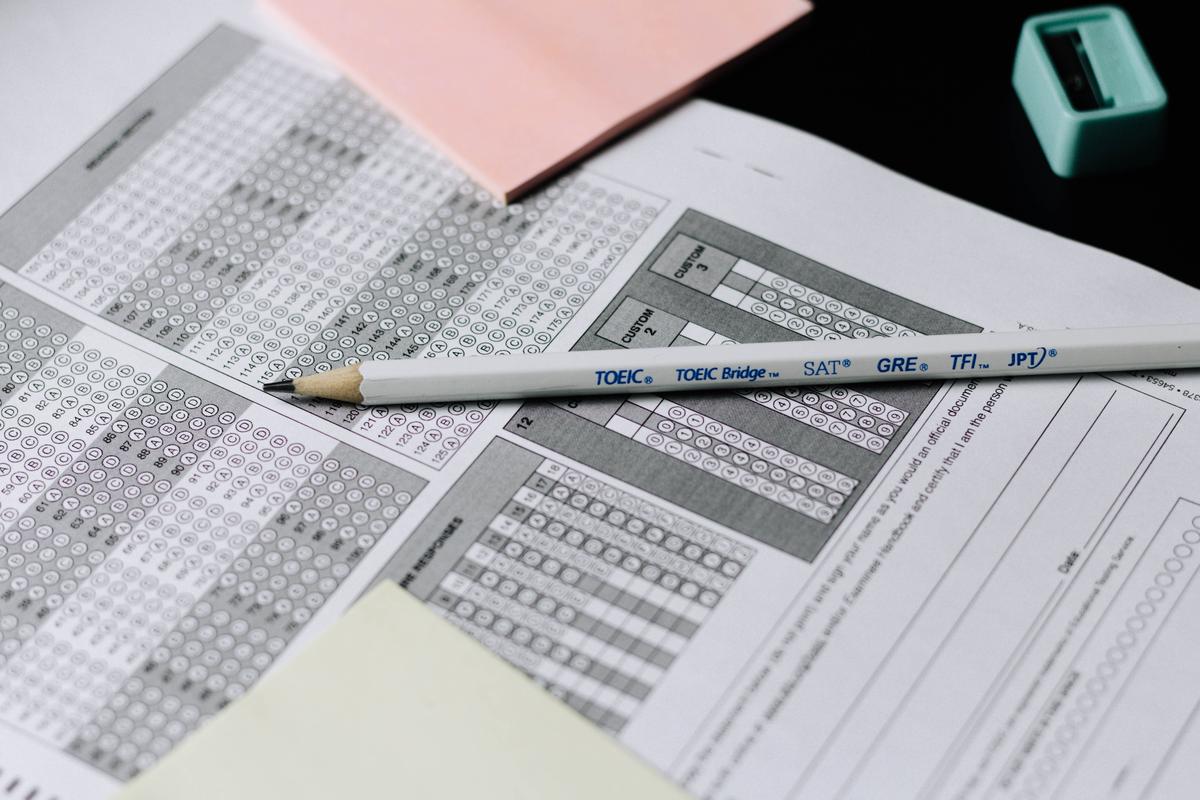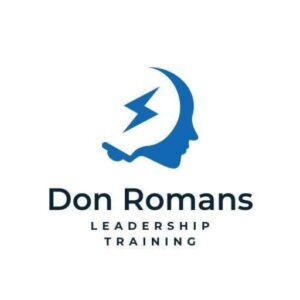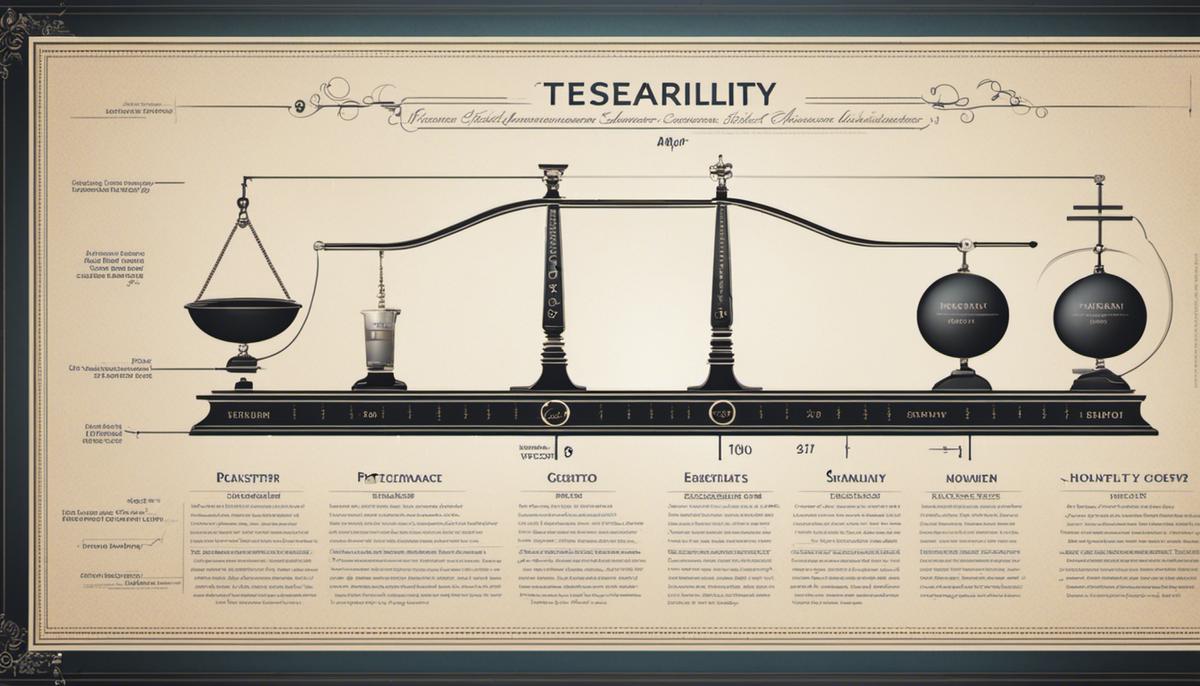The sphere of personality testing is an intriguing dimension of psychology that combines intricate theories, constructs, and practical applications. Many businesses today have turned to these strategically designed tests as a tool in the hiring and team construction process, perceiving them as predictors of job performance, emotional intelligence, thinking style, and behavioural tendencies. This insight into the world of personality tests explores the theories and science behind these tests, their significance in hiring and, the art and science of interpreting their results, providing an in-depth understanding of their role in shaping the corporate landscape.
The Theory of Personality Tests
The Fundamental Concepts Behind Personality Tests
Personality tests employ scientific methods to measure an individual’s personality structure. These tests are underpinned by the principles of psychological measurements, also known as psychometrics. Psychometrics involves designing, administering, and interpreting quantitative tests that measure psychological variables. The core objective is to understand and explain the similarities and differences between individuals in certain psychological variables such as intelligence or personality traits.
The Composition and Design of Personality Tests
Personality tests typically include a range of questions or statements, to which individuals respond. These responses then are interpreted to form a profile of the person’s characteristic values, motivations, attitudes, and behaviors. The selection and framing of these questions or statements are drawn from various psychological theories and research findings. These tests are designed to be reliable, meaning that they yield consistent results over time, and valid, meaning that they measure what they claim to measure.
Factors Assessed in Employee Personality Testing
The factors that personality tests assess can vary widely from one test to another and from one job to another. Most commonly, however, these tests aim to gauge traits such as extraversion, agreeableness, conscientiousness, emotional stability, and openness to experience. More specific job-related attributes might include dominance, influence, steadiness, and conscientiousness. Other important factors that might be assessed include a candidate’s motivation, resilience, adaptability, risk-aversion, and ability to work in teams.
Psychology Behind Personality Testing
Several different schools of psychology have contributed theories and research that underlie the means by which personality tests are created, but most share in common the idea that personality is a consistent set of characteristics that can be identified and measured. Many personality tests are based on Carl Jung’s theory of psychological types, though a number of other psychological theories also have played a role in their development. Personality tests aim to map these various theories into a practical tool that can be used in the workplace for purposes such as hiring, promotion, and team-making.
Emotional Intelligence in Personality Testing
One of the key factors assessed in a personality test is emotional intelligence. Emotional intelligence refers to an individual’s ability to understand, use, and manage their own emotions in positive ways to relieve stress, communicate effectively, empathize with others, overcome challenges, and defuse conflict. It involves the ability to accurately perceive emotions in oneself and others, to use emotions to facilitate thinking, to understand emotional meanings, and to regulate emotions.
Thinking Style in Personality Testing
Thinking style is another significant aspect assessed through personality testing. This refers to the individual’s preferred way of processing information. Some might have an analytical thinking style, preferring to deal with details and concrete facts, while others might have an intuitive thinking style and prefer dealing with abstract ideas and the bigger picture. Understanding an employee’s thinking style can help managers assign tasks that align better with their abilities, resulting in increased productivity and job satisfaction.
An Introduction to Employee Personality Testing
Employee personality testing focuses primarily on behavioral tendencies. Essentially, these are the automatic responses that individual’s exhibit in various situations. Such actions, attitudes and problem-solving strategies reflect an individual’s ingrained behavior patterns. Personality tests are particularly useful in identifying these behavioral tendencies, which might include leadership skills, decision-making capabilities, and team-playing aptitude. From these results, employers can predict how an individual may respond in diverse work scenarios.

Photo by nguyendhn on Unsplash
The Significance of Personality Testing in Hiring
The Role of Personality Testing in Recruitment
As businesses seek to understand more about their prospective employees, personality testing during the hiring process has become significantly prevalent. These assessments aid businesses in understanding the behavioural tendencies, work styles, and overall attitudes of potential hires. Most assessments are structured around the five core personality traits: extraversion, agreeableness, conscientiousness, neuroticism, and openness to experiences, offering an insightful perspective on candidates’ suitability for specific roles.
Predicting Job Performance through Personality Testing
In addition to determining personality congruence with the job role, these tests are used to predict job performance. Numerous studies have shown a link between certain personality traits and job performance. For example, conscientiousness – a trait that suggests reliability, perseverance, and methodical approach – consistently correlates with positive job performance across multiple job categories.
Personality tests can also be instrumental in predicting employee engagement, job satisfaction, and likelihood of turnover. These factors are of particular importance as they directly impact the overall productivity and success of an enterprise.
Facilitating Team Creation and Balance
Besides individual role fitting and performance prediction, personality tests can help in constructing effective teams within the organization. Recognizing each team member’s unique strengths and shortcomings allows for a more diverse and balanced team dynamic. This awareness aids in assigning tasks that match each person’s abilities and temperament, fostering better cooperation and productivity within the team.
Examining Potential Bias and Legal Implications
It is crucial to consider potential biases and legal implications in personality testing during recruitment. A sound personality test should provide accurate, fair results that doesn’t discriminate on the basis of factors such as race, gender, or disability. It’s not only ethical to ensure these factors are considered; but it’s also legally mandated by U.S laws under the Americans with Disabilities Act and Title VII of the Civil Rights Act.
The fairness and validity of these tests remain topics of heated debates. Critics argue the traits categorized as desirable or undesirable may be culturally biased. On top of that, the accuracy of self-reported tests can be hard to ascertain since applicants may portray what they perceive as favorable traits instead of their own authentic traits.
On top of that, companies are obligated to ensure the privacy and appropriate handling of data garnered from these tests to prevent legal issues that might arise due to data breaches or misuse. In sum, while personality tests can provide valuable hiring insights, they must be used with full understanding of and due attention to potential bias and related legal factors.

Interpreting Results and Feedback
Mastering the Interpretation of Personality Test Results
Interpreting the data from personality tests is a skill that uses both art and science, demanding a deep understanding of psychological metrics, pattern analysis, and logical reasoning from HR professionals or managers. A typical personality test produces a vast amount of data, shedding light on an individual’s behavior, traits, skills, motivations, and stress factors.
The first step in interpreting the results is to compare the individual’s scores to benchmark norms for the relevant demographic or position. These normative comparisons serve as a reference point, helping understand the quantified level of each trait. For example, scoring high on extroversion could indicate that an employee is sociable, outgoing, and adept at networking.
Furthermore, it’s essential to examine how different traits interact with each other. For instance, an employee who scores high on extroversion but low on emotional stability might come off as impulsively assertive and reactive, in contrast to an employee who scores high on both areas, presumably demonstrating a more outgoing, enthusiastic, and resilient personality.
Delivering Effective Feedback
Providing feedback on employees’ personality test results demands mastering the art of transparency and communication. The feedback should be provided in an unbiased manner, focusing on the professional context while avoiding any personal judgment tied to the results.
The first step is to ensure that the employee understands the purpose and meaning of the test. The person should be aware of what the test measures and that the feedback is based on their responses. This transparency opens up a platform for constructive discussions.
While providing feedback, it’s critical to explain both strengths and potential areas of growth. Personality tests are designed to portray a balanced view of a person’s traits and behaviors; ensuring feedback accurately reflects this is vital. Highlighting the positive test results encourages employee engagement and builds confidence, while discussing potential areas for improvement reinforces a growth mindset.
It’s also recommended to provide examples or specific situations where an individual’s personality traits may affect their performance — for instance, how their high score in conscientiousness might help in roles requiring strong attention to detail. Real-life examples make the feedback tangible and relatable.
Maximizing Employee Potential through Personality Testing
Personality tests serve as a potent tool for developing and training employees based on their unique attributes. For instance, staff members who demonstrate a strong affinity for collaboration but seem less assertive may benefit from leadership and conflict resolution training. This bolsters their confidence in team scenarios, thereby enhancing their overall performance.
Similarly, individuals with a high creative index yet not as structured could gain significantly from tools and training designed to increase their organizational skills. These interventions enable them to effectively manage projects by bridging their creativity with strategic planning.
The findings of personality tests play a crucial role in spotting high-potential employees who, with tailored development programs, can be prepared to succeed in leadership positions. These assessments offer a comprehensive understanding of an employee’s aptitudes, making them vital inputs in mapping future talent management strategies.
Relying on a mix of psychological knowledge, analytical prowess, and people skills, the interpretation and subsequent application of personality test results encourage transparency and accelerates progress. This approach benefits all stakeholders by driving employee engagement, cultivating a positive workplace culture, and fostering organizational growth.

Case Studies and Controversies
The Real-world Impact of Employee Personality Testing
Often used during the hiring process, employee personality tests have showcased their value in attracting and retaining the right talent and fostering a harmonious, productive work environment. That said, they have also stirred debates over their effectiveness and fairness.
Google, the well-known multinational company, stands as a testament to the successful use of personality tests. The company incorporates these assessments to evaluate potential hires for traits like creativity, cooperation, and leadership potential, aligning with its core value of innovation. This strategic use of personality tests has contributed to Google’s creation of high-performing teams and its reputation for introducing groundbreaking technologies.
On the Flipside: Controversies and Drawbacks
While some laud these tests for their efficiency in predicting an employee’s potential performance, critics point to several controversies associated with them. One commonly cited issue is the accuracy and validity of these tests; for instance, a Harvard Business Review article critiqued the Myers-Briggs Type Indicator (MBTI) — one of the most commonly used personality tests — for being unreliable as people’s responses significantly fluctuate over time.
Further, several legal issues have been raised in relation to personality testing in employment. The famous American case, Griggs vs. Duke Power, is often cited in this context. The case involved an African-American employee who brought a case against his employer over the use of a test that did not have a clear relation to the job and seemingly disqualified minority applicants disproportionately. The court ruled in favor of the employee, shaping Equal Employment Opportunity rules in the United States. This landmark case underscores the importance of properly developing and implementing personality tests in alignment with job requirements and responsibilities.
Expert Opinions on Employee Personality Testing
Many psychologists, legal experts, and business professionals have explored the implications of employee personality testing. Most psychologists agree that while such tests can offer insight into a person’s character or emotional makeup, they should not be the sole determining factor in hiring decisions due to variability and potential for bias.
Legal experts caution against discriminatory practices and emphasize the potential legal liability if tests are used improperly. To mitigate such risks, they recommend adherence to guidelines provided by the Equal Employment Opportunity Commission (EEOC).
Finally, business professionals stress that these tests should augment the hiring process and not replace traditional methods. They emphasize the value of personal interviews, real-world experience, and professional recommendations in conjunction with personality assessments.
From the case studies and controversies surrounding employee personality testing, one thing becomes clear: when used carefully and responsibly, these tests can be a valuable tool in the recruitment process. However, care must be taken to ensure their implementation is fair, non-discriminatory, and serves to enhance the hiring process rather than replace other important factors.

The application of personality tests in the hiring process is a double-edged sword. On one side, it offers an invaluable tool to predict potential job performance and construct well-balanced teams. On the other hand, it can be fraught with potential biases, controversies of validity, and legal issues. A considered understanding and careful application of these tools can help organizations unlock uncharted potential and optimize the functioning of their teams. Consider this journey through the intellectual expanse of personality testing, its application, and implications as a critical lens to evaluate this practice and its scope in the broad spectrum of employee recruitment and development.

